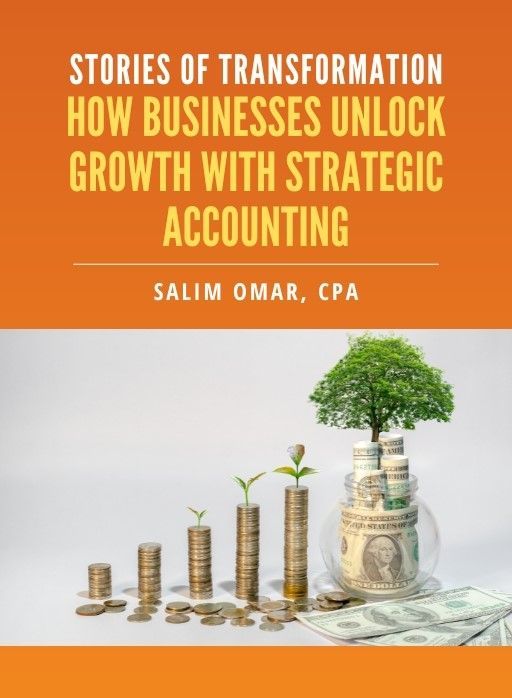Surviving Peak Season: Wellness Tips for Founders and Finance Teams

Q4 moves at warp speed — targets, vendor cutoffs, audits, year-end wrap-ups all hit at once. Schedules jam up, pressure climbs, and there’s zero room for mistakes. Stress might feel inevitable… but it doesn’t have to be the default. With a few deliberate systems, founders and finance teams can protect energy, keep thinking sharp, and finish strong without burning out.
Wellness here isn’t a perk. It’s an
operating advantage: simple habits that reduce decision fatigue, prevent avoidable mistakes, and keep execution steady when the stakes are highest.
Why Wellness Wins in Q4
- Precision over panic: Tired brains miskey numbers, miss context, and second-guess decisions. Rested teams catch issues early and reduce rework.
- Consistency beats heroics: A sustainable weekly cadence delivers more than one late-night sprint.
- Calm sets the tone: When leaders protect their boundaries, it gives the team permission to do the same, leading to better collaboration and sharper decisions.
The Peak-Season Wellness Framework
Think of Q4 wellness as three layers: personal energy, team rhythm, and work design. Get each “good enough,” and performance compounds.
1) Personal Energy: Protect the Battery
- Sleep like it’s on your to-do list
Set a cut-off time at night. Shut down money/finance-related screens 1-1.5 hrs before sleep. Dump any racing thoughts into a notebook so your brain can actually power down. - Mini resets keep you running
Every hour or so, pause for 3-5 minutes. Stretch. Walk. Breathe. Stand under the sky. The purpose isn’t how long — it’s that you unplug. - Fuel that doesn’t fry you
Keep water close at all times. Eat in a way that keeps your energy stable — think protein, fiber, healthy fats. Coffee is great early, but start tapering by the afternoon so it doesn’t mess with your battery at night. - Keep your body in motion (even on packed days)
Get in at least 20–30 minutes of light movement — walk during calls, run through a quick mini workout, or stretch it out. If you’re locked to your desk, stand for the first few minutes of meetings and check your posture once every hour.
2) Team Rhythm: Make the Week Predictable
- One-page weekly plan: On Monday, define top outcomes, key risks, and owners. Keep it visible and update once midweek—avoid spinning new plans daily.
- Fixed cadences:
- Cash huddle: 15 minutes, same time, same agenda.
- Close checklist review: status by owner, blocks, next step.
- Pipeline check: priorities, dependencies, decision needs.
- Boundaries that stick: Publish deep-work hours and response norms. Rotate late coverage if needed, no ongoing hero shifts.
- Clear handoffs: Use standard templates for reviews and approvals. Fewer ad-hoc pings means fewer context switches.
3) Work Design: Reduce Friction at the Source
- Tighten the “last 5%”: Define what “done” means. Checklist reviewers, artifacts, and due times. Label files consistently so no one goes hunting at 11 pm.
- Pre-decide the routine stuff: Meals, workout slots, report templates, meeting agendas. Every pre-decision is one less choice under pressure.
- Limit WIP (work in progress): Cap active priorities. Starting less ensures finishing more.
- Assign a “noise shield”:
Each day, one person handles inbound questions so others can focus.
A Founder/Finance Daily Play
- 10-minute start: Pick 3 outcomes and 1 must-finish. Open the day with the hardest cognitive task.
- Two focus blocks: 60–90 minutes each, device-free. Park interruptions in a notes doc.
- Midday reset: 15 minutes—walk, snack, or quiet time. No screens.
- 5-minute shutdown:
Review tomorrow’s first task, capture open loops, close the laptop on purpose.
Managing the Emotional Load
- Make pulse checks a habit: Start standups by rating workload green / yellow / red so everyone’s bandwidth is clear from the jump.
- Ask early, not late: Small requests prevent big emergencies.
- Celebrate micro-wins: Closed loop on a task, clean reconciliation, faster handoff—reinforce what good looks like.
Common Pitfalls (and Fixes)
- Overcommitting the calendar: Resist stacking meetings in focus blocks. Protect two blocks daily.
- “We’ll rest after year-end”: Performance drops before the finish line if recovery is deferred. Build micro-recovery now.
- Tool sprawl: Too many channels increase noise. Standardize where decisions and updates live.
- Scope creep: Additions must replace something. If everything’s critical, nothing is.
A Simple Q4 Wellness Checklist
- Sleep cutoff set and shared.
- Two daily focus blocks are protected.
- Weekly one-pager posted and reviewed.
- Cash/close/pipeline cadences on calendar.
- Micro-resets and midday reset planned.
- Noise shield assigned daily.
- Boundaries published: deep-work hours, response norms.
- File names and folders standardized.
- Wins called out in the team channel.
Bottom Line
Peak season rewards teams that manage energy as carefully as cash. Wellness isn’t time away from the work—it’s the system that keeps the work accurate, calm, and on track when deadlines tighten.
Founders and finance teams that run a steady cadence, protect focus, and install small resets don’t just
survive Q4—they deliver their best work when it matters most. Strong finishers don’t chase balance in the chaos. They build it into the way they operate.
Free eBook:
Stories of Transformation


Salim is a straight-talking CPA with 30+ years of entrepreneurial and accounting experience. His professional background includes experience as a former Chief Financial Officer and, for the last twenty-five years, as a serial 7-Figure entrepreneur.




